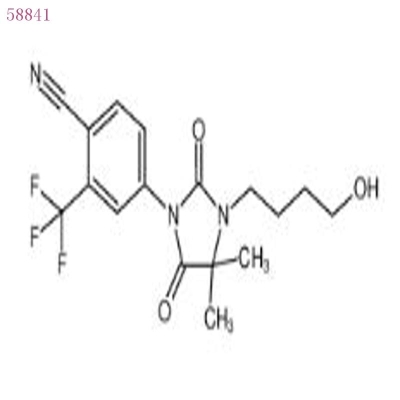-
Categories
-
Pharmaceutical Intermediates
-
Active Pharmaceutical Ingredients
-
Food Additives
- Industrial Coatings
- Agrochemicals
- Dyes and Pigments
- Surfactant
- Flavors and Fragrances
- Chemical Reagents
- Catalyst and Auxiliary
- Natural Products
- Inorganic Chemistry
-
Organic Chemistry
-
Biochemical Engineering
- Analytical Chemistry
- Cosmetic Ingredient
-
Pharmaceutical Intermediates
Promotion
ECHEMI Mall
Wholesale
Weekly Price
Exhibition
News
-
Trade Service
| Pin Tie Guan Yin on the Mechanism of Coping with Dao Genetic Load |
Tieguanyin Tea Plantation Photo courtesy of the Chinese Academy of Agricultural Sciences
Tieguanyin Tea Plantation Photo courtesy of the Chinese Academy of Agricultural Sciences Tea plant is a self-incompatible plant, and it has accumulated a large number of somatic mutations due to long-term asexual reproduction, resulting in a highly heterozygous genome and difficult assembly
.
With the development of sequencing technology, several physical maps of the whole genome of tea plants have been deciphered in recent years, but there is still a lack of research on the genome of Tieguanyin, the first of oolong tea
.
Chaired by You Minsheng, a professor at Fujian Agriculture and Forestry University, and Zhang Xingtan, a researcher at the Institute of Agricultural Genomics of the Chinese Academy of Agricultural Sciences (Shenzhen) (hereinafter referred to as the Shenzhen Institute of Genomics), the team worked with scientists from multiple units at home and abroad to successfully decode the Tieguanyin genome and tea tree evolution history
.
Research results on July 15, 2021 published in "Nature - Genetics" ( Nature Genetics )
Nature Genetics
The research used a self-developed new algorithm to decipher the haploid genome of the excellent tea variety "Tieguanyin", and on this basis explained the mechanism of alleles coping with the "genetic load" during long-term asexual reproduction, and The history of tea plant population evolution and domestication provides new insights for tea plant breeding and improvement
.
Successfully solved the technical problem of Tieguanyin haploid subtype assembly
Successfully solved the technical problem of Tieguanyin haploid subtype assembly Many important crops reproduce vegetatively, such as potatoes, cassava and tea plants
.
You Minsheng, the co-corresponding author of the paper, said that asexual reproduction can effectively retain the excellent genotypes of the parents, and quickly screen and cultivate new varieties
The continuous accumulation of harmful mutations will greatly reduce the organism's ability to adapt to the environment, which will directly affect important agronomic traits
.
"Therefore, analyzing the genome information of vegetatively propagated crops is essential for timely identification and elimination of harmful mutations and improvement of crop quality
Tieguanyin is one of the top ten famous teas in the country and the most famous variety in the Oolong tea series
.
Its fragrance is long-lasting, mellow and refreshing, well-known at home and abroad
The team used two self-developed algorithms (ALLHiC and Khaper) to integrate Illumina short read length, PacBio CLR long read length and high-throughput three-dimensional chromatin capture technology (Hi-C) to overcome the problem of highly heterozygous genome assembly and succeeded Two sets of Tieguanyin genomes were spliced-a haploid reference genome and a haploid typing genome
.
Zhang Xingtan, the co-corresponding author of the paper, told China Science Daily that tea plants are diploid and contain 15 pairs of homologous chromosomes
.
The haploid reference genome is to screen a copy of the homologous chromosomes as a representative and assembled to the chromosome level; while the haploid genome is to assemble two sets of homologous chromosomes from different parents to the chromosome level at the same time
Tieguanyin genome assembly and quality assessment
.
Photo courtesy of the Chinese Academy of Agricultural SciencesTieguanyin genome assembly and quality assessment
Use dominant alleles to cope with "genetic load"
Use dominant alleles to cope with "genetic load" Tieguanyin has been cultivated for about 300 years.
Long-term asexual reproduction has accumulated a large number of somatic mutations, including harmful mutations, which increased the genetic load and reduced its adaptability
.
You Minsheng said that little is known about how vegetatively propagated crops deal with genetic load
.
He said that the traditional heterosis phenomenon can be explained by two hypotheses: dominant effect and super dominant effect
.
Dominant effect refers to the tendency of individuals to use dominant alleles (or dominant genes) that are beneficial to growth and development, while ignoring disadvantaged genes (or recessive genes) that are unfavorable to individuals
Based on Tieguanyin typing genome assembly, the team identified 14,691 genes with allelic variants
.
Among them, 1528 genes have consistent allele-specific expression, that is, the expression of one allele in all tissues and samples is higher than the other allele
There are 386 genes with non-uniform allele-specific expression, that is, two alleles have specific high expression in different tissues
.
"The former can be considered as a gene with a dominant effect, while the latter is a gene with a super-dominant effect
.
" Zhang Xingtan said, this result shows that in the asexually reproduced tea plant genome, the dominant effect may be its response to genetic burden.
Important mechanism
.
Faced with a large number of accumulated somatic mutations or harmful mutations, individuals choose to use non-mutated or beneficial alleles to maintain their normal growth and development and adaptability to the environment
.
Big-leaf tea and small-leaf tea have different evolution and domestication history
Big-leaf tea and small-leaf tea have different evolution and domestication history The genetic diversity of tea plants is relatively high
.
The team also re-sequenced 161 tea plant varieties and 15 closely related species Dali tea, and found that these individuals were clustered into three groups, namely Dali tea, large leaf tea and small leaf tea
.
Big-leaf tea is divided into two subgroups, ancient big-leaf tea and cultivated big-leaf tea; while small-leaf tea is divided into four subgroups, which can be divided into Sichuan, Shaanxi, Zhejiang, northern Fujian, southern Fujian according to their main geographical distribution Two lakes (Hunan and Hubei) and Anhui
.
According to Professor Tang Haibao, the co-corresponding author of the paper and Fujian Agriculture and Forestry University, genetic analysis shows that there are frequent germplasm gene exchanges in various tea areas, some of which are consistent with the recorded history of tea hybrid breeding
.
For example, the yellow rose variety of tea tree showed a mixture of the genomes of Tieguanyin and Huangpi, and the yellow rose is an excellent variety bred by backcrossing the offspring of Huangguanyin and Huangpi
.
"This kind of frequent gene exchange not only occurs in tea species, but also between tea plants and related species
.
" Tang Haibao said that further analysis revealed that these species showed a network-like evolution pattern rather than a simple tree-like evolution
.
More evidence shows that frequent introgression between tea plants and related species is an important factor in the network evolution and maintenance of tea plant genetic diversity
.
In addition, the team found through population genetic analysis that big-leaf tea and small-leaf tea have different evolution and domestication histories
.
About 2.
59 million to 1.
81 million years ago, drastic climate change is likely to cause the shrinkage of the entire tea plant species.
This is also a bottleneck event for the sharing of large-leaf tea and small-leaf tea
.
After the differentiation of the two varieties, the habitat of Xiaoye tea encountered the last ice peak.
The sudden temperature drop between 26,500 and 19,000 years ago may have caused another group bottleneck in Xiaoye tea, but then the rapid expansion of Xiaoye tea adapted to the environment , The group size is restored
.
The group dynamic history of tea trees
.
Photo courtesy of the Chinese Academy of Agricultural Sciences
.
Photo courtesy of the Chinese Academy of Agricultural Sciences
"People's preference for large-leaf tea and small-leaf tea products is different, which has caused the two to experience a parallel domestication process
.
" Zhang Xingtan said that the early domestication of large-leaf tea mainly screened some genes related to the transport of glycosides.
In the improvement stage, people pay more attention to the metabolic pathways related to alkaloids and aroma volatiles
.
Research prospects of tea plant genomics
Research prospects of tea plant genomics In the 1960s, the large-scale promotion of dwarf or semi-dwarf rice and wheat varieties greatly increased crop yields, which was called the "green revolution"
.
The team found that tea plant height is also domesticated during long-term cultivation, which is reflected in the artificial selection of two cytochrome P450 family genes
.
These two genes are involved in the synthesis of brassinolide.
One gene leads to a prolonged hypocotyl in the Arabidopsis mutant, and a mutation in the other gene directly leads to the plant dwarf phenotype
.
"These two genes are very likely to contribute to the'green revolution' in the tea industry, which is dwarfing plants and increasing yields
.
" You Minsheng said
.
In the next research, the team will use omics analysis and molecular biology techniques to mine functional genes, analyze the genetic regulation mechanism behind them, and carry out genomic intelligent design breeding based on big data, which will effectively shorten the breeding cycle and improve Breeding efficiency and reducing breeding costs
.
(Source: China Science News Li Chen)
Related paper information: https://doi.
org/10.
1038/s41588-021-00895-y
org/10.
1038/s41588-021-00895-y







